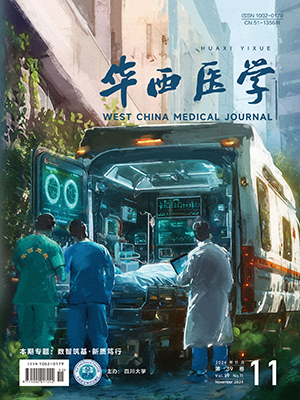| 1. |
Ahmed S, Kaplan A. Therapeutic plasma exchange using membrane plasma separation. Clin J Am Soc Nephrol, 2020, 15(9): 1364-1370.
|
| 2. |
Wang G, He Y, Guo Q, et al. Continuous renal replacement therapy with the adsorptive oXiris filter may be associated with the lower 28-day mortality in sepsis: a systematic review and meta-analysis. Crit Care, 2023, 27(1): 275.
|
| 3. |
Shiga H, Hirasawa H, Nishida O, et al. Continuous hemodiafiltration with a cytokine-adsorbing hemofilter in patients with septic shock: a preliminary report. Blood Purif, 2014, 38(3/4): 211-218.
|
| 4. |
Doi K, Iwagami M, Yoshida E, et al. Associations of polyethylenimine-coated AN69ST membrane in continuous renal replacement therapy with the intensive care outcomes: observations from a claims database from Japan. Blood Purif, 2017, 44(3): 184-192.
|
| 5. |
Poli EC, Rimmelé T, Schneider AG. Hemoadsorption with CytoSorb®. Intensive Care Med, 2019, 45(2): 236-239.
|
| 6. |
Becker S, Lang H, Vollmer Barbosa C, et al. Efficacy of CytoSorb®: a systematic review and meta-analysis. Crit Care, 2023, 27(1): 215.
|
| 7. |
Venet F, Monneret G. Advances in the understanding and treatment of sepsis-induced immunosuppression. Nat Rev Nephrol, 2018, 14(2): 121-137.
|
| 8. |
Wendel Garcia PD, Hilty MP, Held U, et al. Cytokine adsorption in severe, refractory septic shock. Intensive Care Med, 2021, 47(11): 1334-1336.
|
| 9. |
Wang X, Yan X, Wang BC, et al. TMPyP-bound guanosine-borate supramolecular hydrogel as smart hemoperfusion device with real-time visualized/electrochemical bi-modal monitoring for selective blood lead elimination. Biosens Bioelectron, 2021, 184: 113230.
|
| 10. |
Yu Y, Ma B, Jiang X, et al. Amphiphilic shell nanomagnetic adsorbents for selective and highly efficient capture of low-density lipoprotein from hyperlipidaemia serum. J Mater Chem B, 2022, 10(25): 4856-4866.
|
| 11. |
Liu Y, Wang ZK, Liu CZ, et al. Supramolecular organic frameworks as adsorbents for efficient removal of excess bilirubin in hemoperfusion. ACS Appl Mater Interfaces, 2022, 14(42): 47397-47408.
|
| 12. |
Kang JH. Multiscale biofluidic and nanobiotechnology approaches for treating sepsis in extracorporeal circuits. Biochip J, 2020, 14(1): 63-71.
|
| 13. |
Shi Z, Jin L, He C, et al. Hemocompatible magnetic particles with broad-spectrum bacteria capture capability for blood purification. J Colloid Interface Sci, 2020, 576: 1-9.
|
| 14. |
Ran F, Wu J, Niu X, et al. A new approach for membrane modification based on electrochemically mediated living polymerization and self-assembly of N-tert-butyl amide- and β-cyclodextrin-involved macromolecules for blood purification. Mater Sci Eng C Mater Biol Appl, 2019, 95: 122-133.
|
| 15. |
Lacquaniti A, Smeriglio A, Campo S, et al. In vitro simulated hemoperfusion on Seraph®-100 as a promising strategy to counteract sepsis. Biomedicines, 2024, 12(3): 575.
|
| 16. |
Stewart IJ, McCrea K, Chawla L, et al. Adsorption of pathogens and blockade of sepsis cascade. Contrib Nephrol, 2023, 200: 123-132.
|
| 17. |
Didar TF, Cartwright MJ, Rottman M, et al. Improved treatment of systemic blood infections using antibiotics with extracorporeal opsonin hemoadsorption. Biomaterials, 2015, 67: 382-392.
|
| 18. |
Amundson DE, Shah US, De Necochea-Campion R, et al. Removal of COVID-19 spike protein, whole virus, exosomes, and exosomal microRNAs by the Hemopurifier® lectin-affinity cartridge in critically ill patients with COVID-19 infection. Front. Med, 2021, 8: 744141.
|
| 19. |
Li Y, Chen Y, Yang T, et al. Targeting circulating high mobility group box-1 and histones by extracorporeal blood purification as an immunomodulation strategy against critical illnesses. Crit Care, 2023, 27(1): 77.
|
| 20. |
Kishikawa T, Fujieda H, Sakaguchi H. Comprehensive analysis of cytokine adsorption properties of polymethyl methacrylate (PMMA) membrane material. J Artif Organs, 2022, 25(4): 343-349.
|
| 21. |
Teixeira JP, Neyra JA, Tolwani A. Continuous KRT: a contemporary review. Clin J Am Soc Nephrol, 2023, 18(2): 256-269.
|
| 22. |
Macedo E, Cerdá J. Choosing a CRRT machine and modality. Semin Dial, 2021, 34(6): 423-431.
|
| 23. |
Tandukar S, Palevsky PM. Continuous renal replacement therapy: who, when, why, and how. Chest, 2019, 155(3): 626-638.
|
| 24. |
Hammouda N, Neyra JA. Can artificial intelligence assist in delivering continuous renal replacement therapy?. Adv Chronic Kidney D, 2022, 29(5): 439-449.
|
| 25. |
Neyra JA, Kashani K. Improving the quality of care for patients requiring continuous renal replacement therapy. Semin Dial, 2021, 34(6): 501-509.
|
| 26. |
Tan Y, Dede M, Mohanty V, et al. Forecasting acute kidney injury and resource utilization in ICU patients using longitudinal, multimodal models. J Biomed Inform, 2024, 154: 104648.
|
| 27. |
Guru PK, Singh TD, Passe M, et al. Derivation and validation of a search algorithm to retrospectively identify CRRT initiation in the ECMO patients. Appl Clin Inform, 2016, 7(2): 596-603.
|
| 28. |
Zhang L, Baldwin I, Zhu G, et al. Automated electronic monitoring of circuit pressures during continuous renal replacement therapy: a technical report. Crit Care Resusc, 2015, 17(1): 51-54.
|
| 29. |
Chen H, Ma Y, Hong N, et al. Early warning of citric acid overdose and timely adjustment of regional citrate anticoagulation based on machine learning methods. BMC Med Inform Decis Mak, 2021, 21(Suppl 2): 126.
|
| 30. |
Kang MW, Kim S, Kim YC, et al. Machine learning model to predict hypotension after starting continuous renal replacement therapy. Sci Rep, 2021, 11(1): 17169.
|
| 31. |
Wan T, Gurupur V. Understanding the difference between healthcare informatics and healthcare data analytics in the present state of health care management. Health Serv Res Manag Epidemiol, 2020, 7: 2333392820952668.
|




